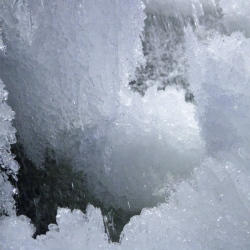
The cover on 17 September dipped to 5.01 million sq km, and has risen slightly since then, suggesting the autumn re-freeze has now taken hold. This year’s minimum is fractionally smaller than last year (5.10 million sq km), making summer 2014 the sixth lowest in the modern satellite record. The Antarctic, in contrast, continues its winter growth.
It is still a few weeks away from reaching its maximum, which will continue the record-setting trend of recent years. Ice extent surrounding the White Continent has just topped 20 million sq km. The marine cover at both poles is the subject of discussion at a major UK Royal Society conference taking place this week.
In the Arctic, Prof Julienne Stroeve from the US National Snow and Ice Data Center said conditions in the north had been relatively cool this summer. "This was what we might now call a ‘normal year’," she told BBC News.
